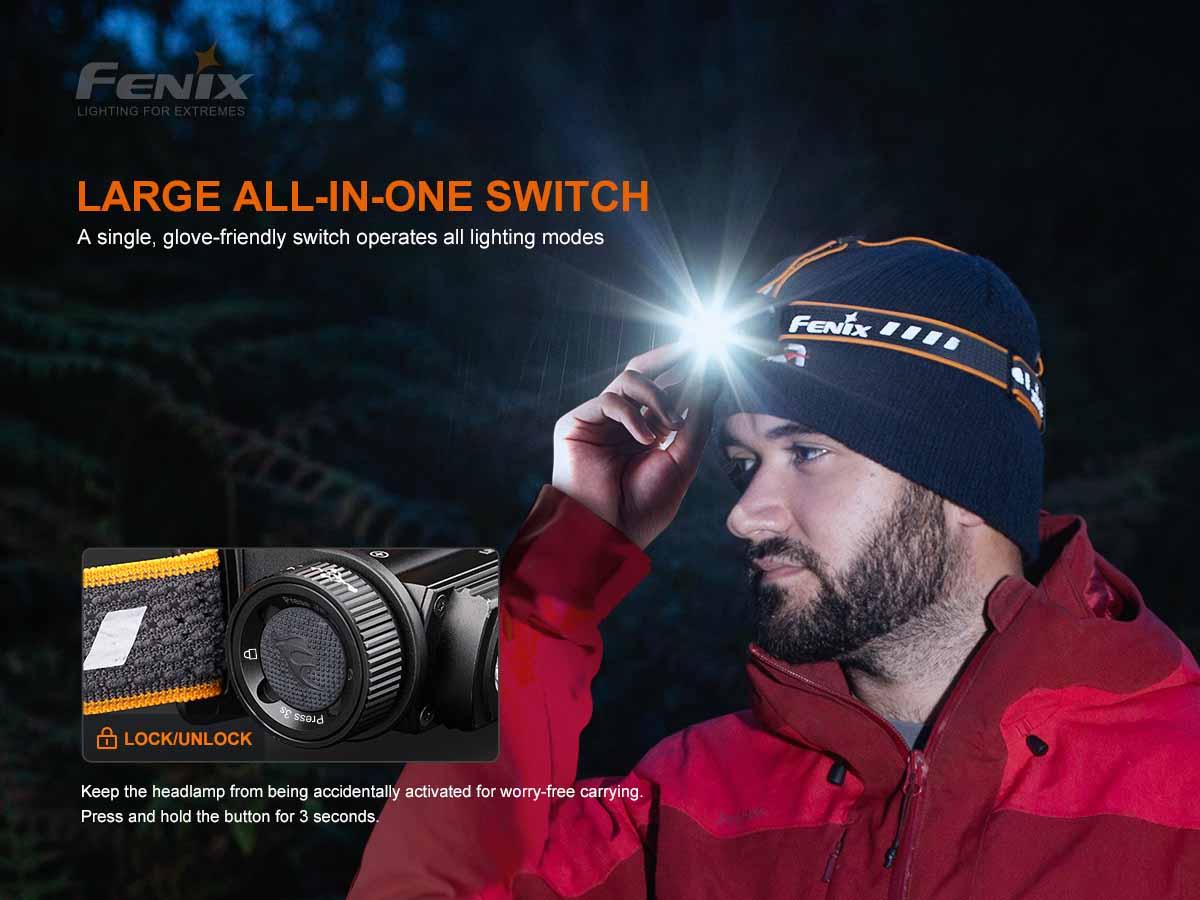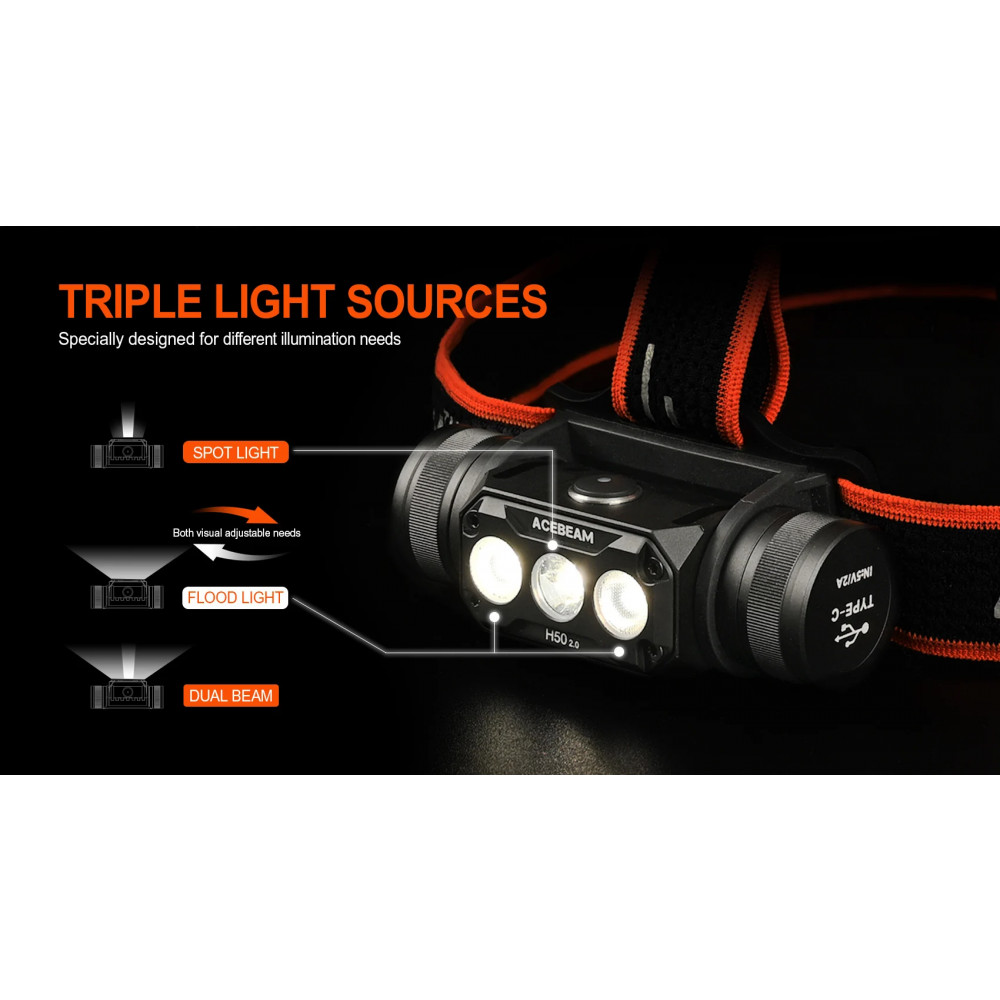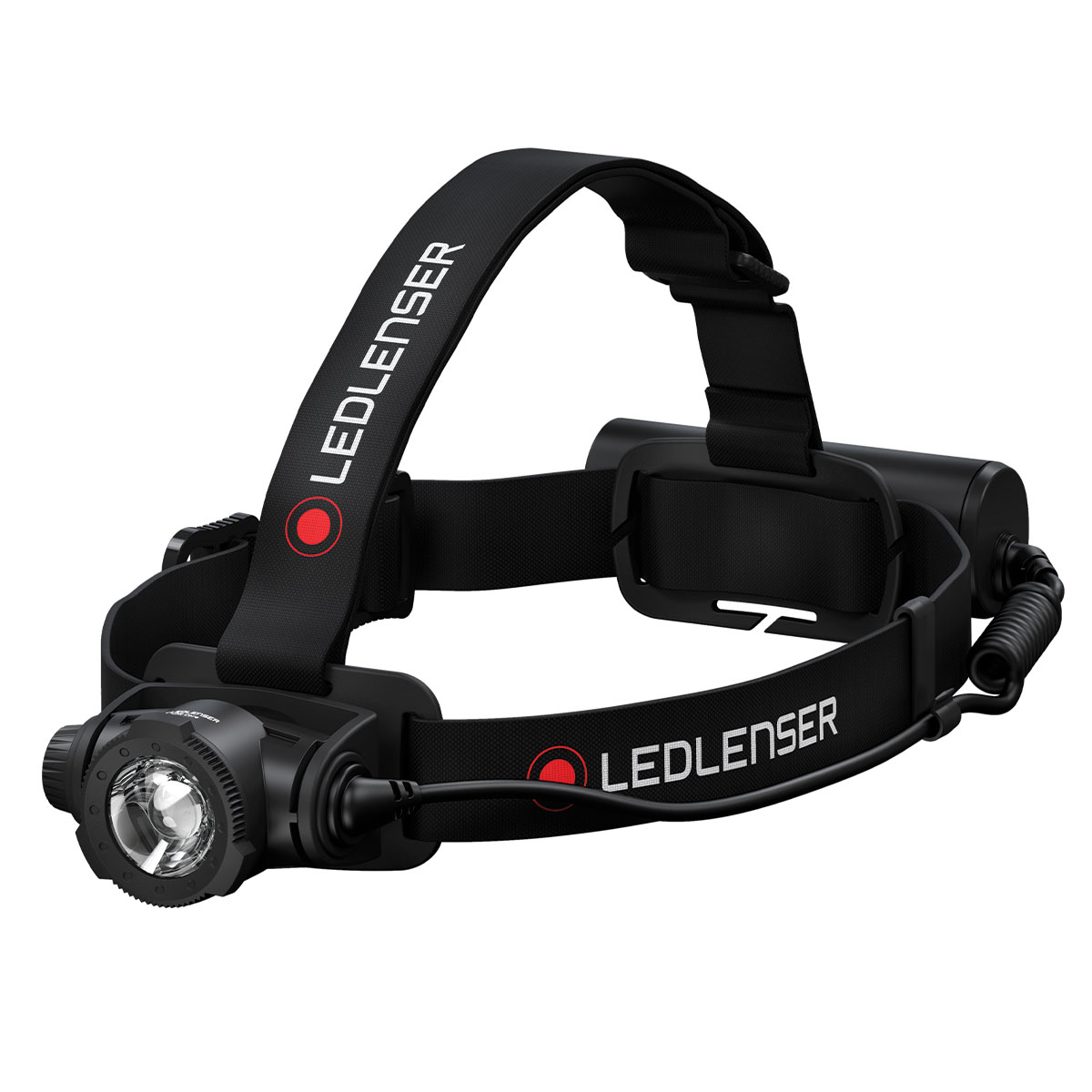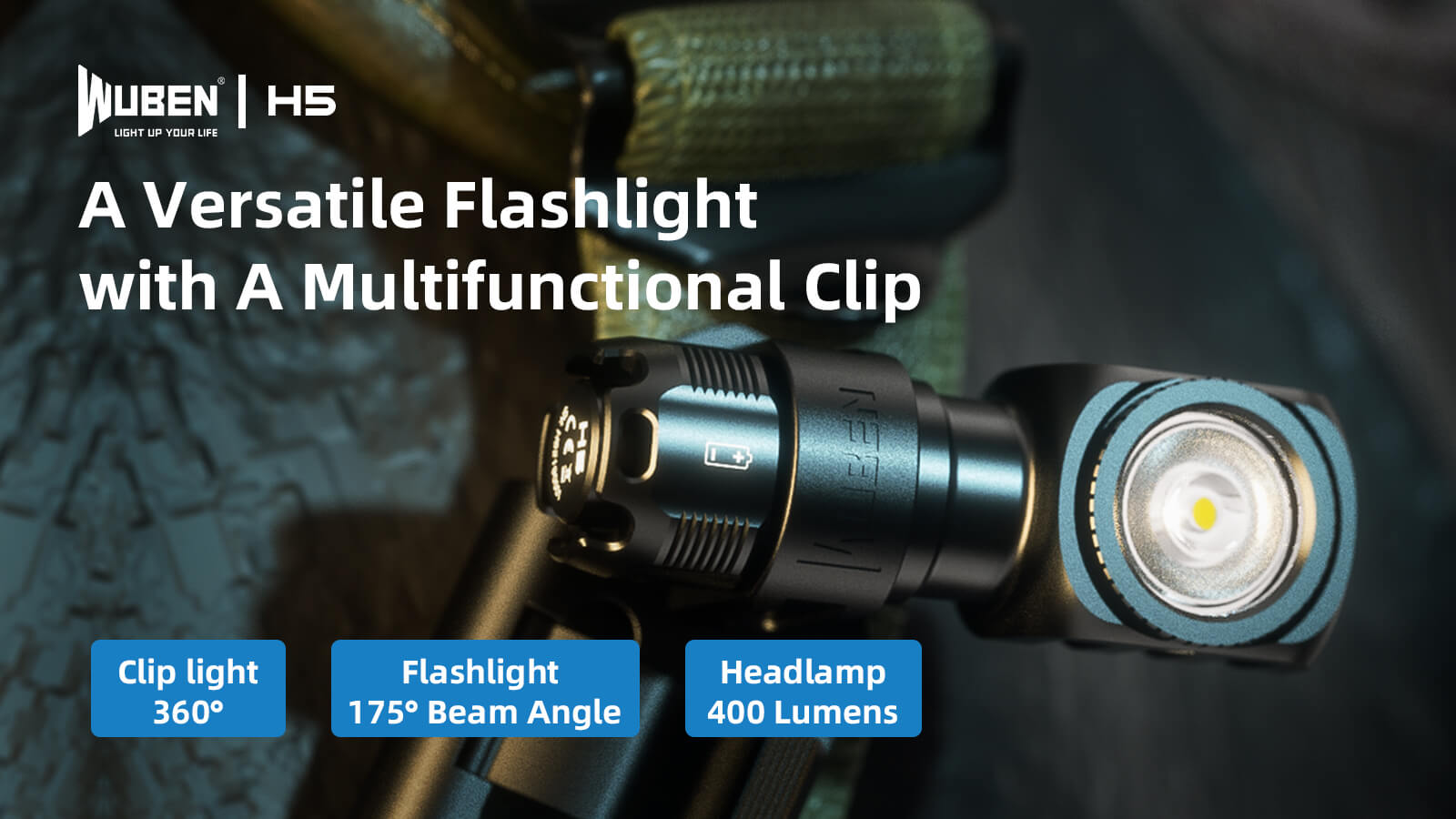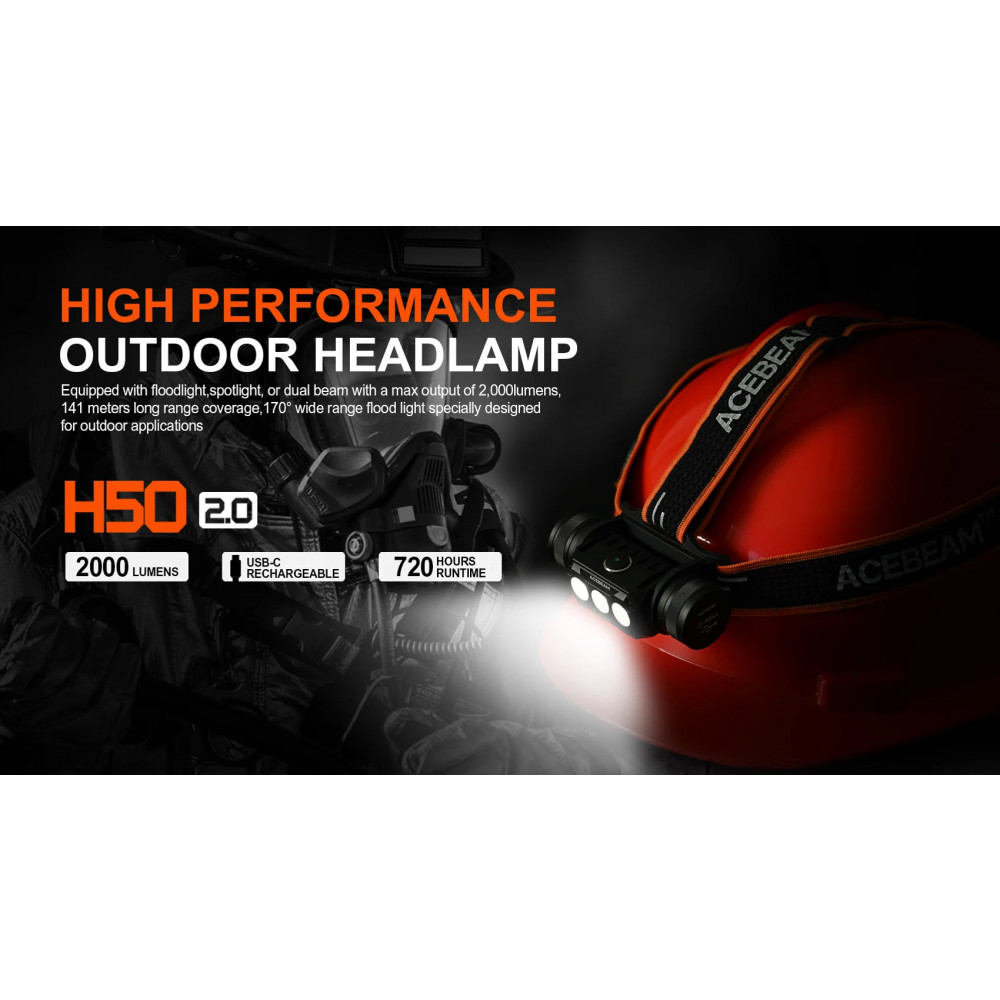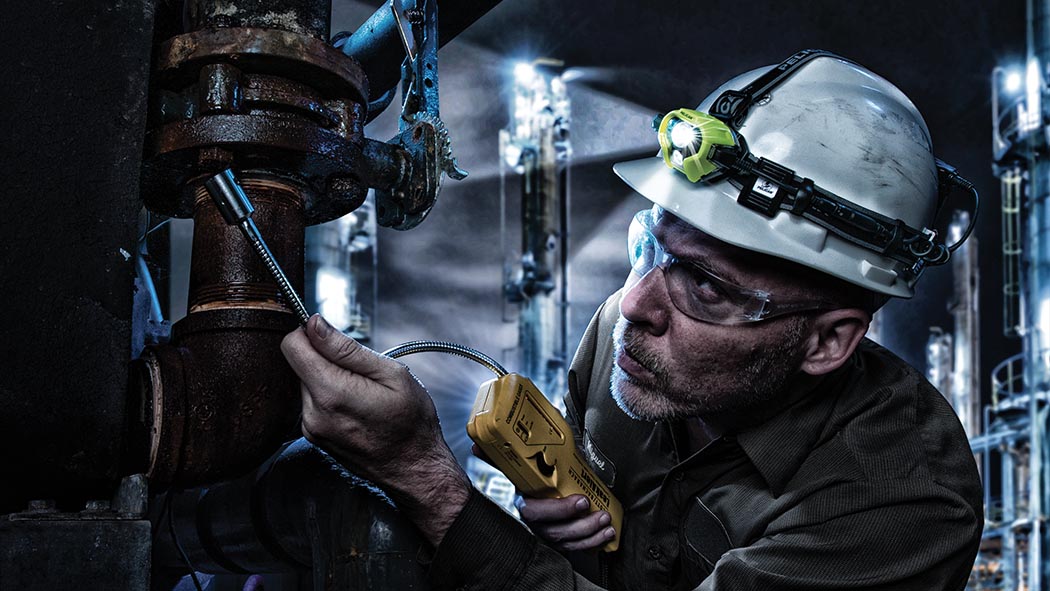
I. Introduction
Welcome to “The Ultimate Guide to Headlamps: Who Uses Them and Why.” Headlamps have become an indispensable tool for outdoor enthusiasts, DIYers, athletes, and many other groups of people who need a hands-free, portable, and bright lighting solution. In this guide, we will explore who uses headlamps, why they are useful, how to choose the right one, and much more.
But first, let’s take a moment to understand what headlamps are and how they work.
A headlamp is a type of portable light that is mounted on a headband and directed forwards. Headlamps are generally equipped with LEDs and powered by batteries. Some headlamps come with rechargeable batteries, while others use disposable batteries.
One of the main advantages of headlamps is that they free up the hands, allowing the user to perform tasks or activities while still having a source of light. Headlamps are also highly portable and can be worn on the head, making them ideal for outdoor activities, night work, and many other scenarios.
In the following sections, we will dive deeper into the world of headlamps and explore the different types of people who use them, the reasons why they are so useful, and the key factors to consider when choosing the right one. So, let’s get started!
II. Who Uses Headlamps
Headlamps are versatile tools that are used by a variety of people for different purposes. Here are some of the key groups who use headlamps:
Outdoor enthusiasts:
Outdoor enthusiasts such as hikers, campers, and climbers can make use of headlamps in various scenarios. When setting up camp in low-light conditions, a headlamp can provide hands-free illumination for tasks like pitching a tent, gathering firewood, or cooking dinner. On a hike, a headlamp can help navigate a trail or find gear in a backpack. For climbers, a headlamp can be an essential tool for illuminating the path ahead on technical climbs, or for safely navigating back down in the dark. In all of these cases, a headlamp offers a convenient and portable light source that frees up hands and allows the user to focus on their activity, rather than holding a flashlight.
DIYers and handymen:
DIYers and handymen use headlamps for a variety of tasks, as they need their hands free to work. For example, when performing carpentry work in a dark basement or under a sink, a headlamp can provide bright, focused light for precise cuts or measurements. When plumbing or electrical work is required, a headlamp can provide a safe and convenient source of light, allowing for easy navigation and access to tight spaces. During home repairs or car repairs, a headlamp can help a DIYer or handyman to see what they’re working on in dim or dark conditions, making their task easier and more efficient. With a headlamp, these workers can focus on the task at hand without worrying about holding a flashlight or disturbing their work area with additional lights.
Athletes and runners:
Athletes and runners might use a headlamp for early morning or late evening training sessions when it is too dark to see the trail or road ahead. A high-performance headlamp provides hands-free lighting that illuminates the path ahead, allowing them to focus on their exercise and not have to worry about holding a flashlight. Some headlamps have adjustable brightness levels, making it easy to switch from a low level for running on a well-lit trail to a higher level for navigating difficult terrain in low light. Many headlamps also come with reflective materials, which can increase visibility and safety for the runner during early morning or late evening runs. Overall, a headlamp can be a valuable tool for athletes and runners looking to extend their training beyond daylight hours.
Night workers:
Construction workers, miners, and other night workers use headlamps to provide hands-free lighting while they work. The headlamp’s adjustable strap and beam direction allow them to direct light where they need it most, freeing up their hands to use tools or navigate through dark workspaces. With bright, long-lasting beams and weather-resistant designs, headlamps are ideal for these types of workers who often work in dim or challenging environments and need a reliable source of light. Whether they’re working in a deep mine, a dark construction site, or another challenging setting, a headlamp is a must-have tool for anyone who needs to see clearly and work efficiently in low-light conditions.
Reading and camping enthusiasts:
For those who enjoy reading, camping, or simply relaxing in the great outdoors, headlamps provide a convenient way to light up the night. Whether it’s a camping trip or just a backyard barbecue, a headlamp can come in handy for a variety of outdoor activities. Additionally, many headlamps come equipped with a red light mode that helps to preserve night vision and minimise light pollution, making them ideal for use in dark, rural environments.
Emergency preparedness:
When it comes to emergency preparedness, a headlamp can be a crucial tool. In a situation where power is out and visibility is limited, a headlamp can provide a source of light that allows the user to see their surroundings and carry out tasks with their hands free. This can be especially important when navigating through unfamiliar or challenging terrain, or when performing important tasks such as first aid or setting up a shelter. Headlamps with long battery life and durable construction can ensure that the light will be available when it’s needed most. Some headlamps may also have features such as strobe or red light modes that can be used as a signal for help in an emergency situation. Overall, incorporating a headlamp into an emergency preparedness kit can help increase the level of safety and confidence in the face of unexpected events.
These are just a few of the many groups who use headlamps. With their hands-free operation, portability, and bright light, headlamps have become a valuable tool for people of all types and walks of life.
III. Why Use Headlamps
Headlamps are a convenient and practical lighting solution for a variety of activities and scenarios. Here are some of the key benefits of using headlamps:
Hands-free Operation:
Hands-free operation is one of the most significant benefits of using a headlamp. When performing tasks or activities that require both hands to be free, a headlamp provides the perfect solution. This is particularly true for outdoor enthusiasts such as hikers, campers and climbers, as well as DIYers and handymen who require their hands to be free to carry equipment, climb or perform repairs. Additionally, night workers such as construction workers, miners and other workers who require both hands to be free to perform their tasks will also benefit from hands-free operation. With a headlamp, you have the ability to light your workspace while keeping your hands free to perform your job, making it easier and more efficient to complete tasks.
Portability and Convenience:
The benefit of portability and convenience is one of the key reasons why headlamps are so popular. With a headlamp, you can easily bring light with you wherever you go without having to hold a flashlight or lantern. This makes it an ideal tool for people who are on the go and need light in different locations. The small, lightweight design of most headlamps means that they can be easily carried in a backpack, purse, or even a pocket, making them the perfect choice for outdoor enthusiasts and DIYers who need light while on the move.
Brightness and Beam Distance:
The benefit of brightness and beam distance when using a headlamp cannot be overstated. Having a bright, far-reaching beam allows you to see and navigate your surroundings with ease, even in low light conditions. With high lumen output and a wide beam angle, headlamps can effectively light up large areas and provide clear visibility for tasks and activities. This is especially important for outdoor enthusiasts who may be navigating challenging terrain in the dark, or for workers who need to be able to see their work area clearly. The ability to adjust the brightness and beam distance to suit your needs makes headlamps a versatile tool for various applications. Headlamps come in a variety of brightness levels, with some models delivering up to several thousand lumens of light. In addition to brightness, you should also consider the beam distance, which refers to the distance the light travels. Depending on the model, beam distances can range from 30 meters to over 200 meters, allowing you to see further in the dark.
Durability and Weather Resistance:
Headlamps are often designed with durability and weather resistance in mind, making them an ideal choice for a wide range of outdoor activities and applications. They are typically made with rugged materials such as water-resistant plastic and rubber, and they often have waterproof and shock-proof features to protect the electronics from damage. Additionally, many headlamps are designed to withstand extreme temperatures, both hot and cold, ensuring that they can be used in any weather conditions. These features are important for outdoor enthusiasts and emergency preparedness, as well as for construction workers and miners who need to use their headlamps in challenging conditions. A durable and weather-resistant headlamp will provide reliable illumination, even in the toughest conditions, ensuring that the user can always see what they need to see, no matter the weather.
Adjustability and Comfort:
Headlamps are designed with adjustability and comfort in mind, allowing the user to customise the fit to their own preferences. This can include adjusting the headband to fit snugly and comfortably on the head, as well as adjusting the angle and direction of the light. Many headlamps also feature a lightweight design, making them comfortable to wear for extended periods of time, as well as models with soft, breathable materials that won’t cause discomfort during extended use. With the ability to adjust the light beam, the user can focus the light exactly where it’s needed, reducing eye strain and improving overall visibility. In addition, some headlamps offer tilt adjustments, allowing the user to aim the light in different directions for added versatility. All these features work together to make the headlamp a comfortable and user-friendly tool for any activity.
Battery Life and Rechargeability:
Headlamps have become increasingly popular in recent years due to their battery life and rechargeability. This means that users don’t have to worry about constantly replacing batteries, or finding a power source while they’re out and about. Many headlamps come with rechargeable batteries that can be easily charged using a USB cable. The battery life of headlamps can vary depending on the brand and model, but many can last for several hours on a single charge. This makes headlamps an ideal choice for people who need a bright, reliable source of light for extended periods of time.
IV. Choosing the Right Headlamp
When it comes to choosing the right headlamp, there are several key factors to consider. By taking these into account, you can ensure that you select a headlamp that is best suited to your needs.
Lumens and beam distance:
When choosing a headlamp, it is important to consider the lumens of the light. For instance, a headlamp with 100 lumens will provide a brighter and longer beam than a headlamp with 50 lumens. The recommended minimum for outdoor activities is around 100 lumens, which will allow you to see the trail or area in front of you. However, for technical activities or rescue scenarios, you may need a headlamp with a higher lumen output, such as 300 lumens or higher, to provide a brighter and wider beam for maximum visibility. Additionally, the beam distance is also an important factor to consider. A good headlamp should have a beam distance of at least 50 meters, which will provide sufficient light for outdoor activities, while a beam distance of 100 meters or more is recommended for technical and rescue scenarios.
Battery life and rechargeability:
When choosing a headlamp, it is important to consider the battery life and rechargeability. A headlamp with a longer battery life is ideal for longer adventures or extended use, while a rechargeable headlamp is convenient for those who want to reduce waste and save money on disposable batteries. The battery life is usually measured in hours and can range from as low as 2 hours to as high as 50 hours depending on the headlamp’s brightness setting and battery capacity. A headlamp with a removable battery pack is also a good choice, as you can carry spare batteries for longer adventures. The recharge time can also vary, with some headlamps taking as little as 2 hours to recharge, while others can take up to 6 hours. Consider the battery life and rechargeability when choosing a headlamp to ensure it meets your specific needs.
Durability and weather resistance:
When choosing a headlamp for outdoor activities or demanding work conditions, it’s important to consider the durability and weather resistance of the device. This will ensure that the headlamp can withstand the elements and perform well in harsh environments. Here are some key things to look for:
- Water Resistance: Look for a headlamp with a high water resistance rating, such as IPX7 or IPX8, which indicates that it can be submerged in water for a certain amount of time without damage.
- Impact Resistance: Check the headlamp’s specifications for its impact resistance, which indicates how well it can withstand drops and other impacts.
- Material Quality: Opt for a headlamp made of high-quality materials, such as aluminum or other lightweight metals, that can resist corrosion and wear and tear.
It’s also helpful to look at the manufacturer’s warranty and return policy, as well as customer reviews, to get an idea of the headlamp’s overall durability and reliability.
Comfort and adjustability:
When choosing a headlamp, comfort and adjustability are important factors to consider. A headlamp should fit securely and comfortably on the head without slipping or bouncing around during use. The headband should be adjustable and made of a soft and breathable material to reduce pressure points and hot spots. Additionally, the headlamp should have a flexible tilt mechanism so you can direct the beam where you need it. The tilt mechanism should be easy to adjust even with gloves on. You should also consider the weight of the headlamp and how it is balanced, as this will affect how comfortable it is to wear for extended periods of time. To ensure comfort and adjustability, it is recommended to try on a headlamp before purchasing to see if it feels comfortable and secure, and check the specs to see if it has adjustable headband and tilt mechanisms.
Additional features:
When choosing a headlamp, there are additional features to consider. These features can enhance the overall experience and performance of the headlamp. Some of these features include:
- Light modes: Some headlamps come with different light modes such as high, medium, low, flashing and SOS modes.
- IPX rating: The IPX rating measures a headlamp’s resistance to water, with higher numbers indicating greater protection. A rating of IPX7 is the standard for water resistance, while IPX8 indicates waterproofness.
- Lockout mode: A lockout mode allows you to lock the headlamp to prevent accidental activation, which can be especially useful when carrying it in a pack.
- Red light mode: A red light mode can be useful for preserving night vision or when using the headlamp in close proximity to others.
- Strobe mode: A strobe mode can be used as a signal or to disorient an attacker.
- Weight: A lighter headlamp can be more comfortable to wear for long periods of time. Headlamps can range from 50g all the way up to 500g.
By taking these factors into consideration, you can ensure that you choose a headlamp that is best suited to your needs and provides the features and functionality that you are looking for.
V. Conclusion
Headlamps are a versatile and essential tool for many different types of people, from outdoor enthusiasts to night workers, and have numerous benefits such as hands-free operation, portability, and brightness. By considering the key factors such as brightness, battery life, durability, comfort, and adjustability, you can choose the headlamp that best suits your needs. With the right headlamp, you’ll be well-equipped for your next outdoor adventure, nighttime DIY project, or emergency situation.
In the market for a new headlamp? Check out our wide range of high-quality headlamps!

